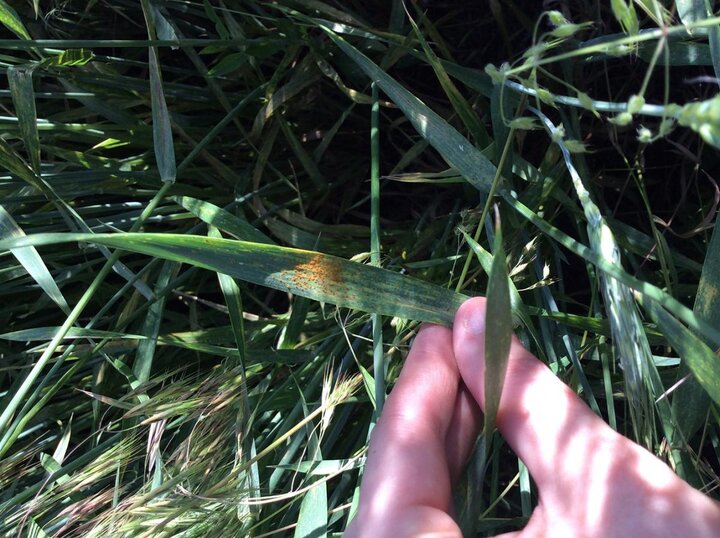
Also see an addendum to this article.
A survey May 9-10 of wheat fields in southeast and south central Nebraska did not reveal any diseases. Wheat growth stage ranged from Feekes 6 (first node detectable) in fields that are behind in wheat development to Feekes 10 (boot) in fields along Hwy 136 in extreme southern Nebraska. Most fields were at two or three nodes detectable (Feekes 7). In general wheat development is behind where it should be at this time of year due to the prolonged cold/winter conditions that prevailed well into April.
The counties surveyed were Saline, Jefferson, Thayer, Nuckolls, Webster, and Saunders. All fields were lush green (Figure 1) and, except for irrigated fields, dry. A few fields had large yellow areas (Figure 2) that are likely due to a nutrient deficiency. The dry weather has delayed development of diseases; however, diseases will start developing in fields that receive moisture in the form of rainfall or irrigation. Therefore, scouting should continue for early disease detection. See the April 19 CropWatch article which details the diseases to watch for when scouting (fungal leaf spots, powdery mildew, and the rusts).
Reports from southern states (Texas, Oklahoma, and Kansas) indicate the intensity and prevalence of stripe rust (Figure 3) are low. To date the farthest north stripe rust has been reported in the central Great Plains is three counties in southeast Kansas. Because the wheat crop in Nebraska is behind in development, there is still potential for stripe rust to develop to damaging levels, especially if we get rainfall. And because temperatures are getting warmer, there is potential for leaf rust (Figure 4) to develop as well.
Management
At this time the absence of disease (or presence of very low levels of it) indicates a fungicide application is not warranted. The best timing for a fungicide application to control foliar fungal diseases is at 50% to 100% flag leaf emergence. The decision to apply a fungicide should be based on
- the presence of disease,
- favorable environmental conditions for disease development (wet weather), and
- the price of wheat.
Foliar fungal diseases are most effectively controlled by applying a fungicide preventatively – after disease detection and before the disease starts to develop to damaging levels. Fungicide application to control foliar fungal diseases should be aimed at protecting the flag leaf. A 2018 fungicide table developed by the multi-state committee, Management of Small Grain Diseases (NCERA 184), shows the efficacy of different fungicides and modes of action in controlling specific foliar fungal diseases of wheat.



